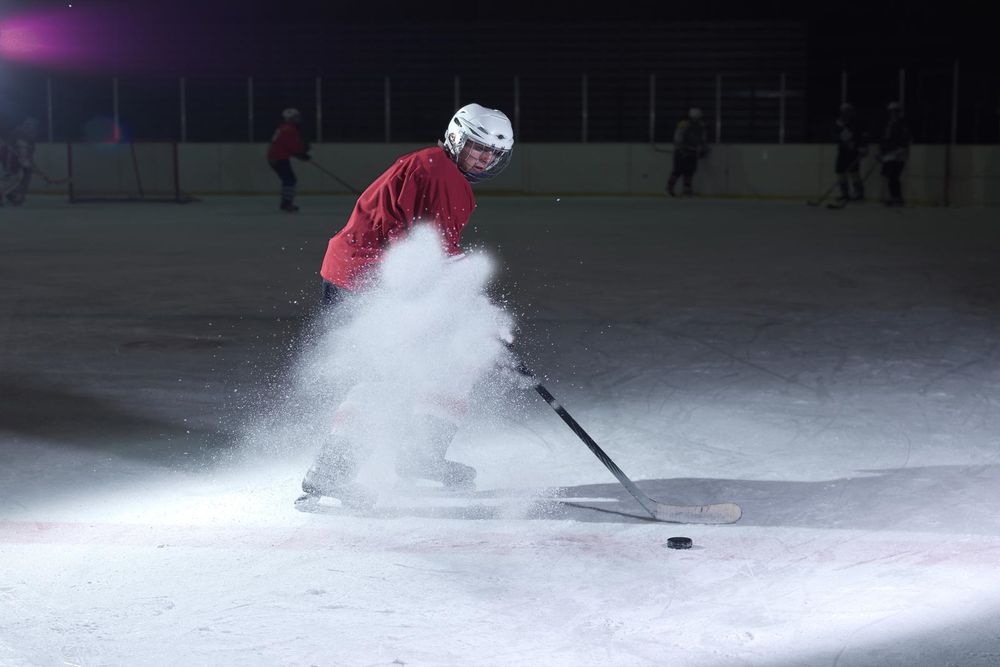In the realm of sports, the distinction between aerobic and anaerobic exercises holds significant importance when it comes to understanding their impact on athletic performance.
Aerobic exercises focus on sustained energy levels and oxygen utilization, while anaerobic exercises rely on short bursts of intense effort and stored energy.
This article examines the analysis of hockey as an aerobic or anaerobic sport, delving into the unique demands it places on athletes.
While hockey primarily falls under the category of anaerobic sports due to its stop-and-start nature and high-energy output in brief shifts, it is essential to acknowledge the aerobic elements involved.
Hockey workouts effectively target both aerobic and anaerobic systems, making it a sport that combines endurance and power.
By exploring the characteristics and demands of aerobic and anaerobic exercises, this article sheds light on the nuanced nature of hockey as a sport.
Definition of Aerobic and Anaerobic Exercises
Aerobic and anaerobic exercises can be defined based on their effects on heart and breathing rates as well as their reliance on oxygen or stored energy.
Aerobic exercises, such as running, swimming, and cycling, increase heart and breathing rates and maximize oxygen in the blood. These exercises are performed at a consistent energy level without relying on stored energy.
On the other hand, anaerobic exercises, like jumping, lifting, and sprinting, involve full effort in shorter periods of time and rely on stored energy rather than oxygen. They are performed with spurts of effort and intervals, requiring periods of recovery.
Both aerobic and anaerobic exercises have their advantages and disadvantages.
Aerobic exercises improve cardiovascular endurance and promote weight loss. They also reduce the risk of chronic diseases such as heart disease and diabetes. However, they may not be as effective in building muscle strength and power.
On the other hand, anaerobic exercises help build muscle strength and power, increase bone density, and improve overall body composition. However, they do not provide the same cardiovascular benefits as aerobic exercises.
The impact of aerobic and anaerobic training on overall fitness is significant. Incorporating both types of exercises into a fitness routine can help improve cardiovascular endurance, muscle strength, and overall athletic performance.
Characteristics of Aerobic and Anaerobic Sports
One common characteristic of aerobic and anaerobic sports is that they each have distinct energy requirements and training methods.
Aerobic exercises, such as running, swimming, and cycling, focus on increasing heart and breathing rates to maximize oxygen in the blood. They are performed at a consistent energy level without relying on stored energy.
On the other hand, anaerobic exercises, like jumping, lifting, and sprinting, involve full effort in shorter periods of time and rely on stored energy rather than oxygen.
In terms of sports, aerobic sports, such as swimming, basketball, soccer, and running, maintain a similar level of effort throughout, have uncommon rest periods, and prioritize endurance.
Anaerobic sports, like hockey, football, baseball, weightlifting, and sprinting, expend high levels of effort in a shorter time span, have common periods of recovery or intervals, and emphasize power and strength.
Hockey, specifically, is primarily an anaerobic sport due to its stop-and-start style of play and the use of high levels of energy in short shifts. Players activate their aerobic system by not fully recovering during the game and recover their anaerobic system on the bench. Hockey combines elements of both aerobic endurance and anaerobic power.
Overall, understanding the differences between aerobic and anaerobic training is crucial for athletes and coaches to design effective training programs that target specific energy systems and enhance performance.
While aerobic exercise offers benefits such as improved cardiovascular health and increased endurance, anaerobic training focuses on developing power, strength, and speed.
Hockey as an Anaerobic Sport
Hockey is predominantly an anaerobic sport due to its stop-and-start style of play and the high levels of energy expended in short shifts. The constant changes in direction, sudden bursts of speed, and physicality of the game all contribute to the anaerobic nature of hockey.
The impact of anaerobic training on hockey performance is crucial as it helps players develop explosive power, speed, and strength necessary for quick sprints, rapid changes in direction, and intense physical battles on the ice.
However, incorporating aerobic training in hockey also has its benefits. Aerobic training helps improve endurance, allowing players to recover faster between shifts and maintain a high level of performance throughout the game.
Therefore, a combination of both anaerobic and aerobic training is essential for hockey players to excel in their sport.
Hockey’s Aerobic Elements
The incorporation of aerobic training in hockey enhances players’ endurance and contributes to their overall performance on the ice. Here are three benefits of aerobic exercise for hockey players and how anaerobic training can be incorporated into hockey workouts:
- Improved Stamina: Aerobic exercise helps players develop a higher aerobic capacity, allowing them to sustain a high level of performance for longer periods. This is crucial in hockey, where players need to continuously skate, change directions, and compete at a high intensity.
- Faster Recovery: Aerobic training helps players recover more efficiently during games and between shifts. By improving cardiovascular fitness, players can quickly replenish oxygen stores and remove waste products, reducing fatigue and enabling them to perform at their best.
- Enhanced Endurance: Incorporating aerobic exercises into hockey workouts can improve players’ overall endurance, enabling them to withstand the physical demands of the game. This can lead to increased ice time and improved performance throughout the season.
To maximize performance, it is important to strike a balance between aerobic and anaerobic training in hockey workouts. By incorporating both types of exercises, players can develop the necessary power, speed, and endurance required for success on the ice.
Examples of Aerobic and Anaerobic Exercises and Sports
Incorporating both aerobic and anaerobic exercises into training regimens is crucial for maximizing performance in hockey. By combining these two types of exercises, players can reap the benefits of improved endurance, power, and overall fitness.
Aerobic exercises such as running, swimming, and cycling focus on increasing heart and breathing rates, maximizing oxygen in the blood, and developing endurance. These exercises help hockey players maintain a consistent energy level throughout the game and enable them to consistently return to the ice.
On the other hand, anaerobic exercises like jumping, lifting, and sprinting prioritize power and strength. These exercises are crucial for hockey players to generate explosive speed, agility, and quick bursts of energy needed for fast-paced gameplay.
Frequently Asked Questions
What Are Some Examples of Aerobic Exercises That Can Help Improve Hockey Performance?
Examples of aerobic exercises that can help improve hockey performance include running, swimming, and cycling. Aerobic fitness is important in hockey as it enhances endurance, allowing players to consistently return to the ice and maintain high levels of performance.
How Does the Stop-And-Start Style of Play in Hockey Contribute to Its Classification as an Anaerobic Sport?
The stop-and-start style of play in hockey contributes to its classification as an anaerobic sport due to the high intensity levels and short bursts of effort required. This leads to the activation of the anaerobic system and the reliance on stored energy rather than oxygen.
Can Hockey Players Improve Their Anaerobic Endurance Through Specific Training Exercises?
Hockey players can enhance their anaerobic endurance through targeted training exercises that focus on developing power, strength, and the ability to perform high-intensity bursts of effort followed by periods of recovery.
Are There Any Benefits to Incorporating Both Aerobic and Anaerobic Training Into a Hockey Player’s Workout Routine?
Incorporating both aerobic and anaerobic training into a hockey player’s workout routine provides numerous benefits. It helps improve overall performance by enhancing endurance, power, and strength. A balanced training approach is crucial for optimal hockey performance.
How Does the Combination of Aerobic Endurance and Anaerobic Power in Hockey Contribute to Overall Performance on the Ice?
The combination of aerobic endurance and anaerobic power in hockey plays a crucial role in overall performance on the ice. Aerobic training improves players’ endurance and ability to consistently return to the ice, while anaerobic training enhances their power and strength for intense bursts of effort. This combination allows hockey players to effectively navigate the stop-and-start style of play and maintain high levels of performance throughout the game.
Conclusion
In conclusion, hockey is a unique sport that combines both aerobic and anaerobic elements.
While it primarily falls under the category of anaerobic sports due to its stop-and-start nature and high-energy output, hockey also involves elevated heart and breathing rates, indicating the presence of aerobic demands.
With workouts that target both endurance and power, hockey requires athletes to possess a combination of sustained energy levels and short bursts of intense effort.
It truly is a sport that challenges both the mind and body.









